The treasure is evidence of a dramatic moment in the history of the country - the conquest of the Byzantine Empire by the Umayyad House. Archaeologist of the Israel Antiquities Authority, Dr. Yoav Lerer: "Whoever buried the coins inside a wall probably performed a miracle on his soul in the hope of returning and collecting his property, but he was not granted this"
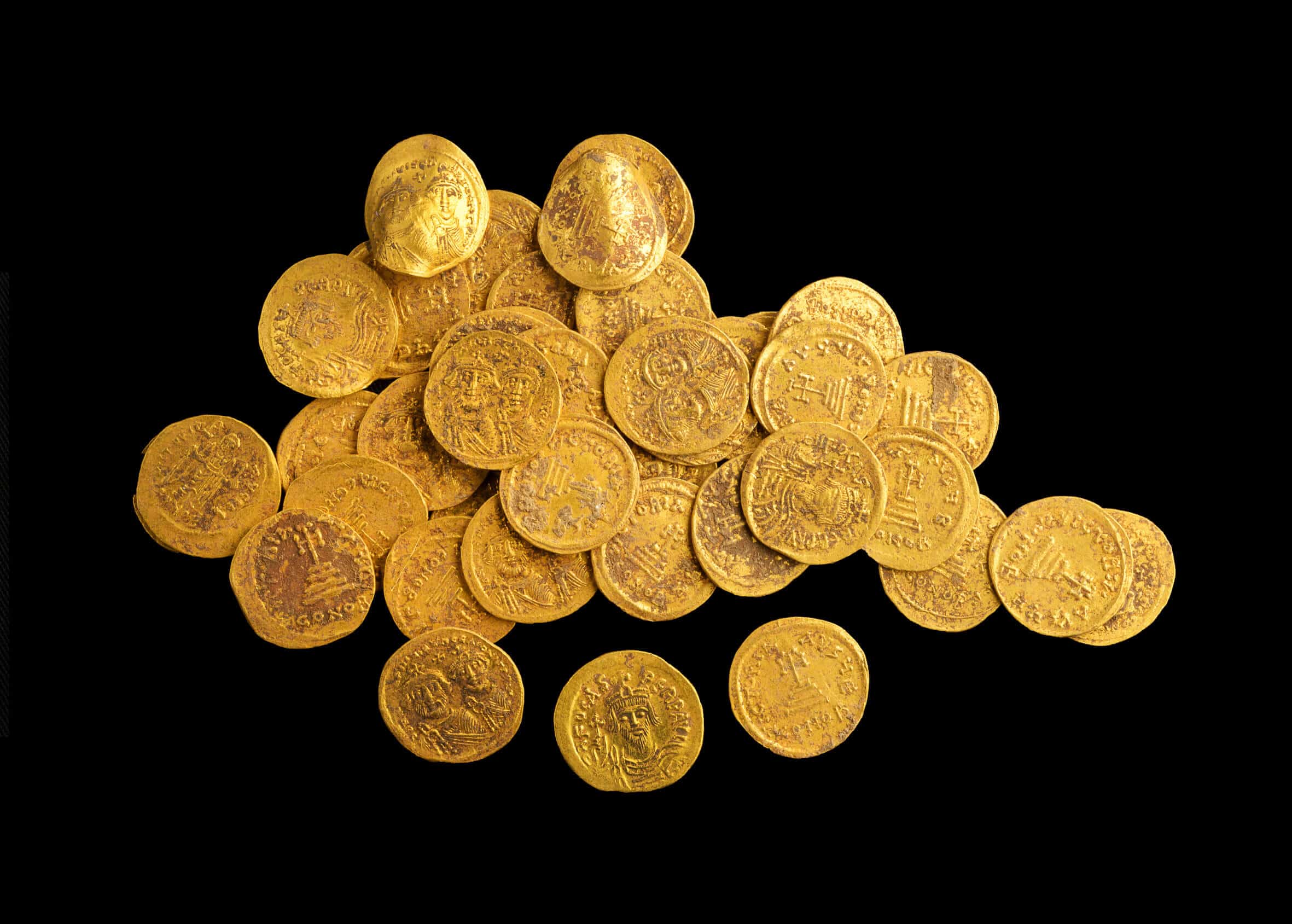
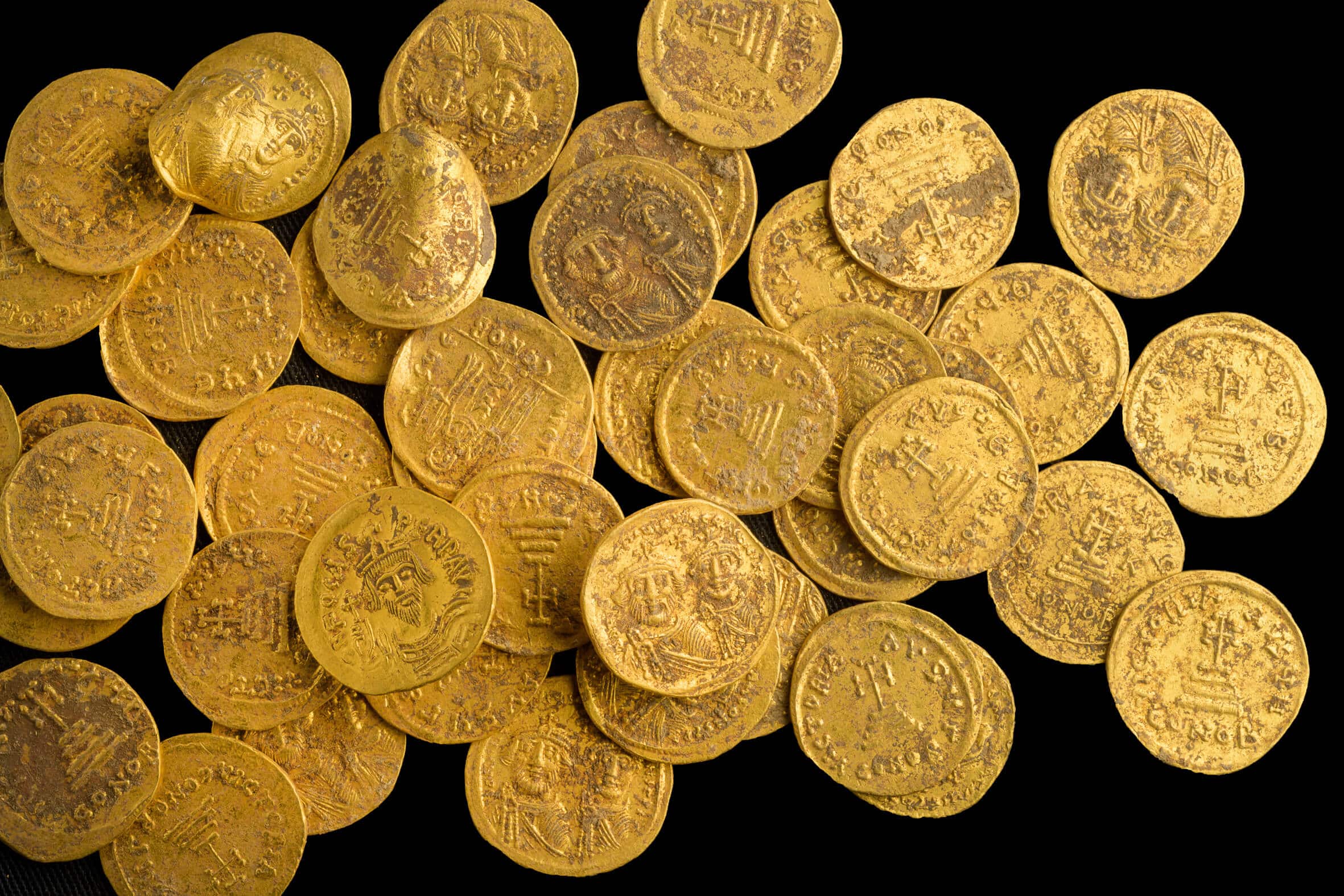
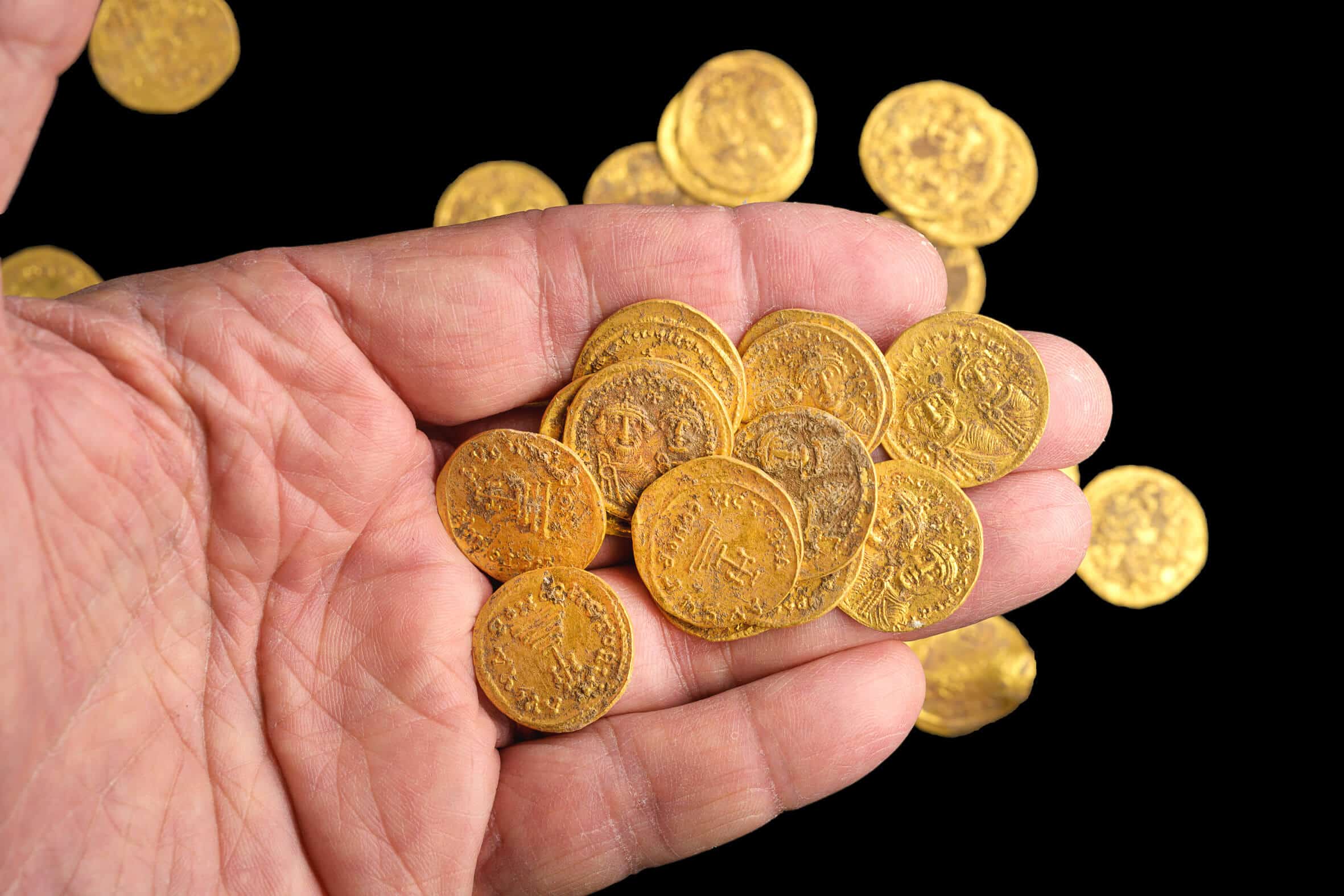
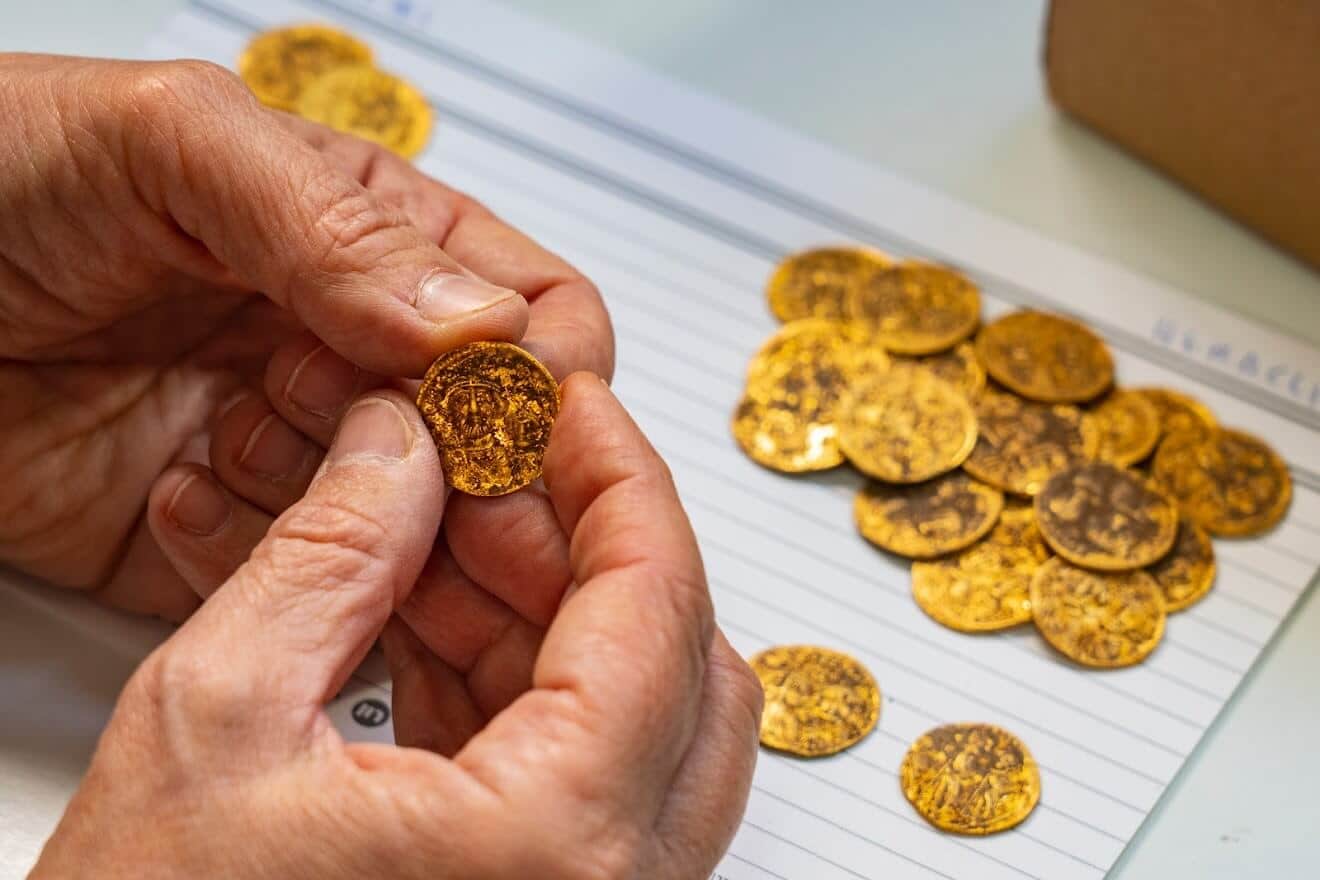
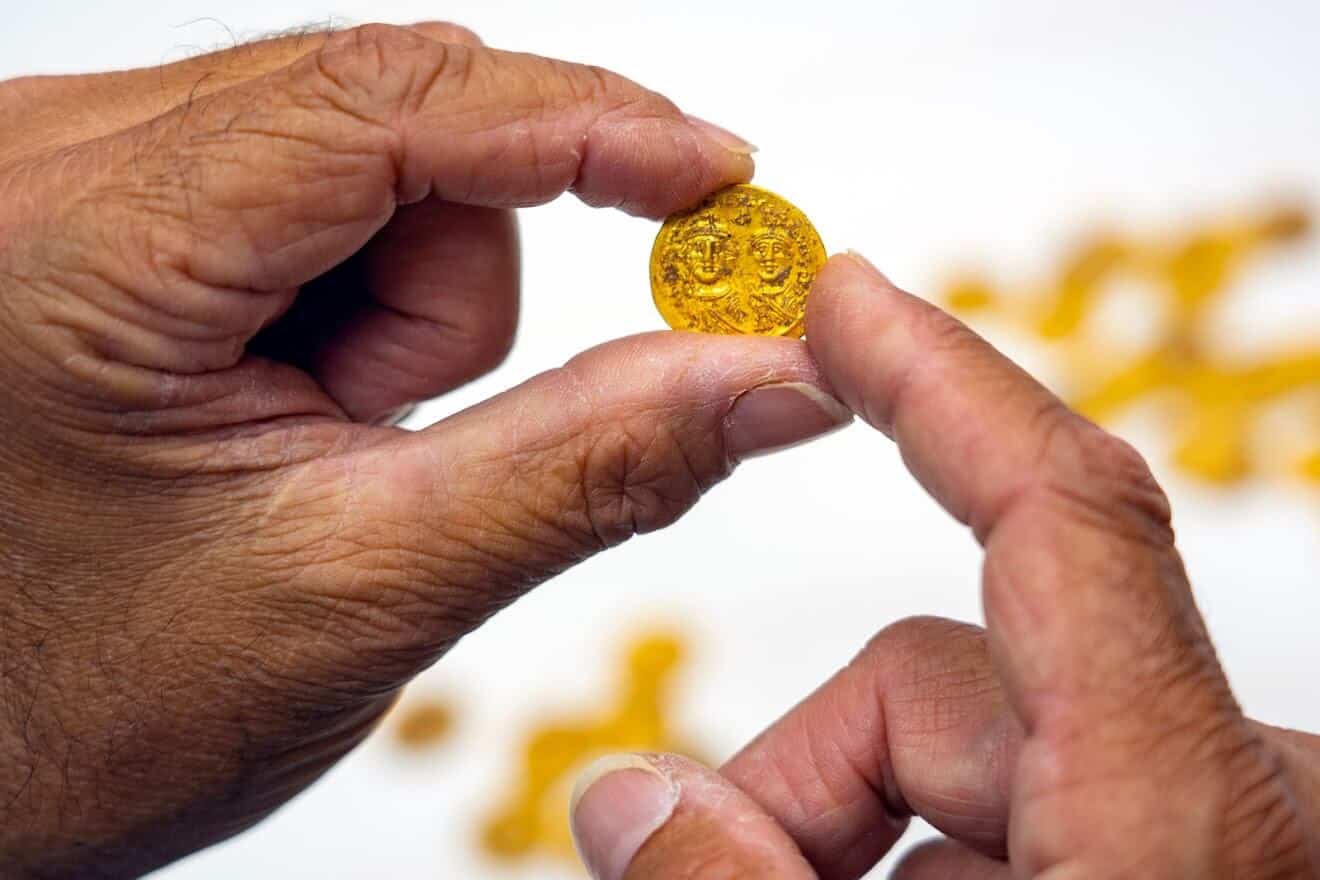
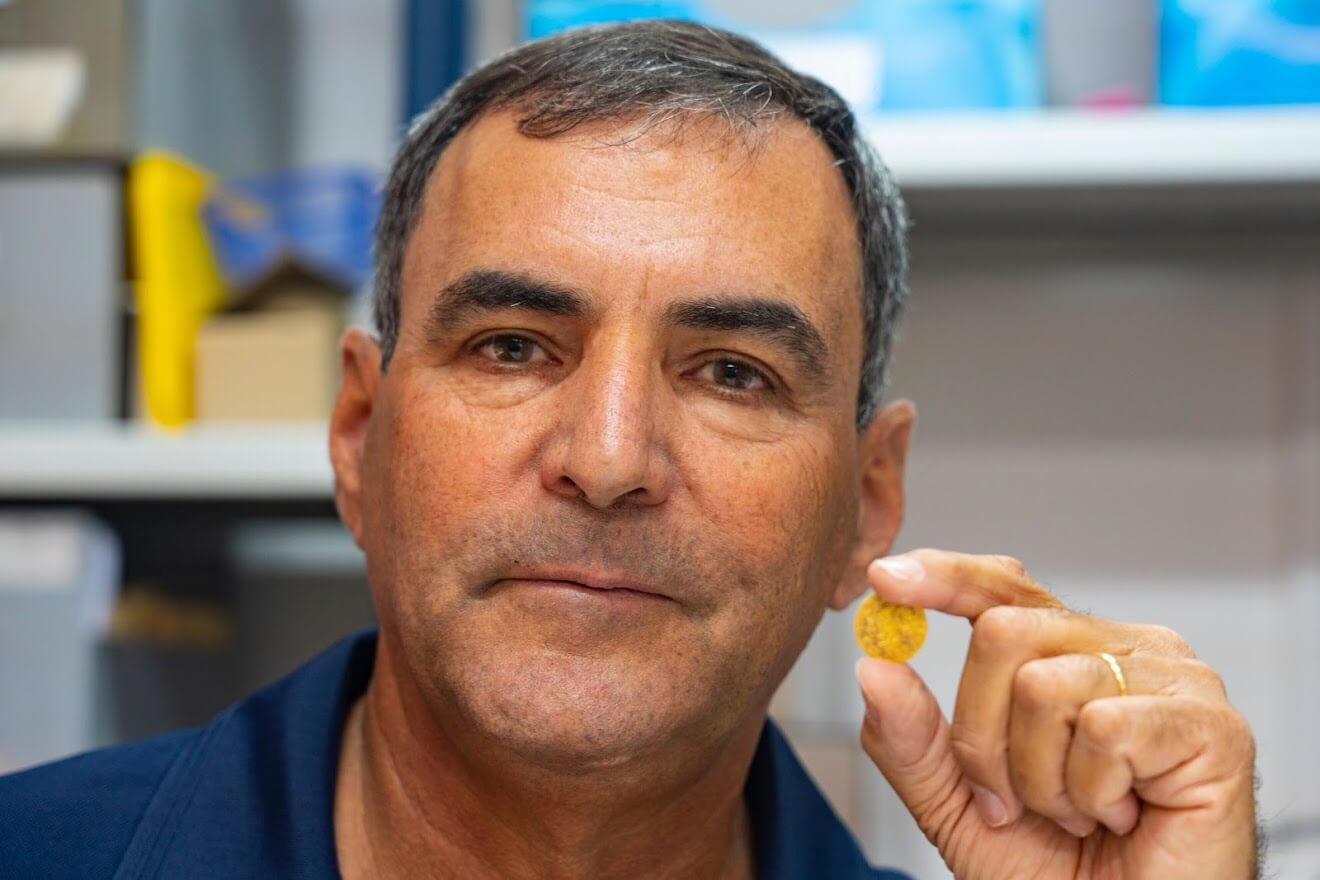
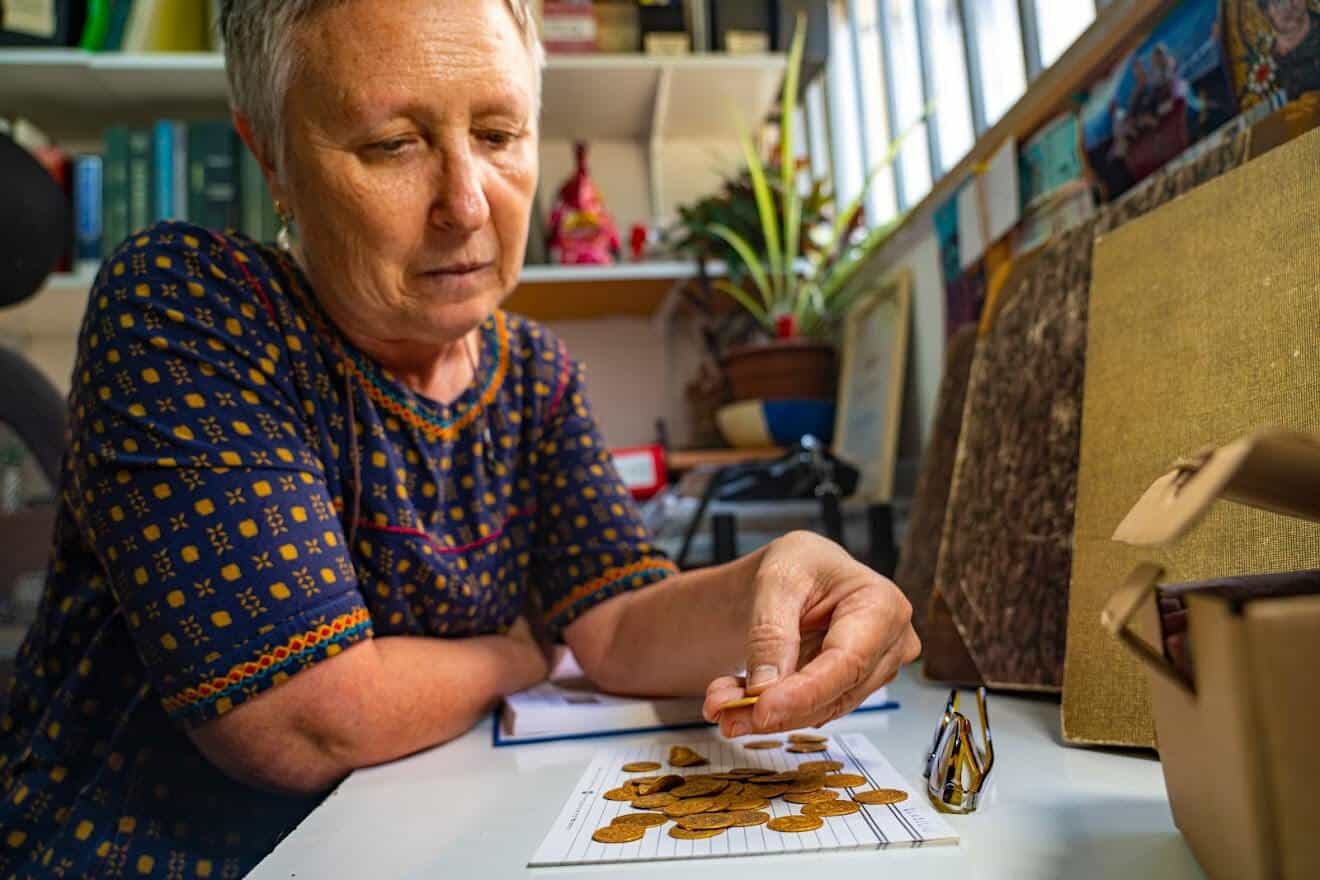
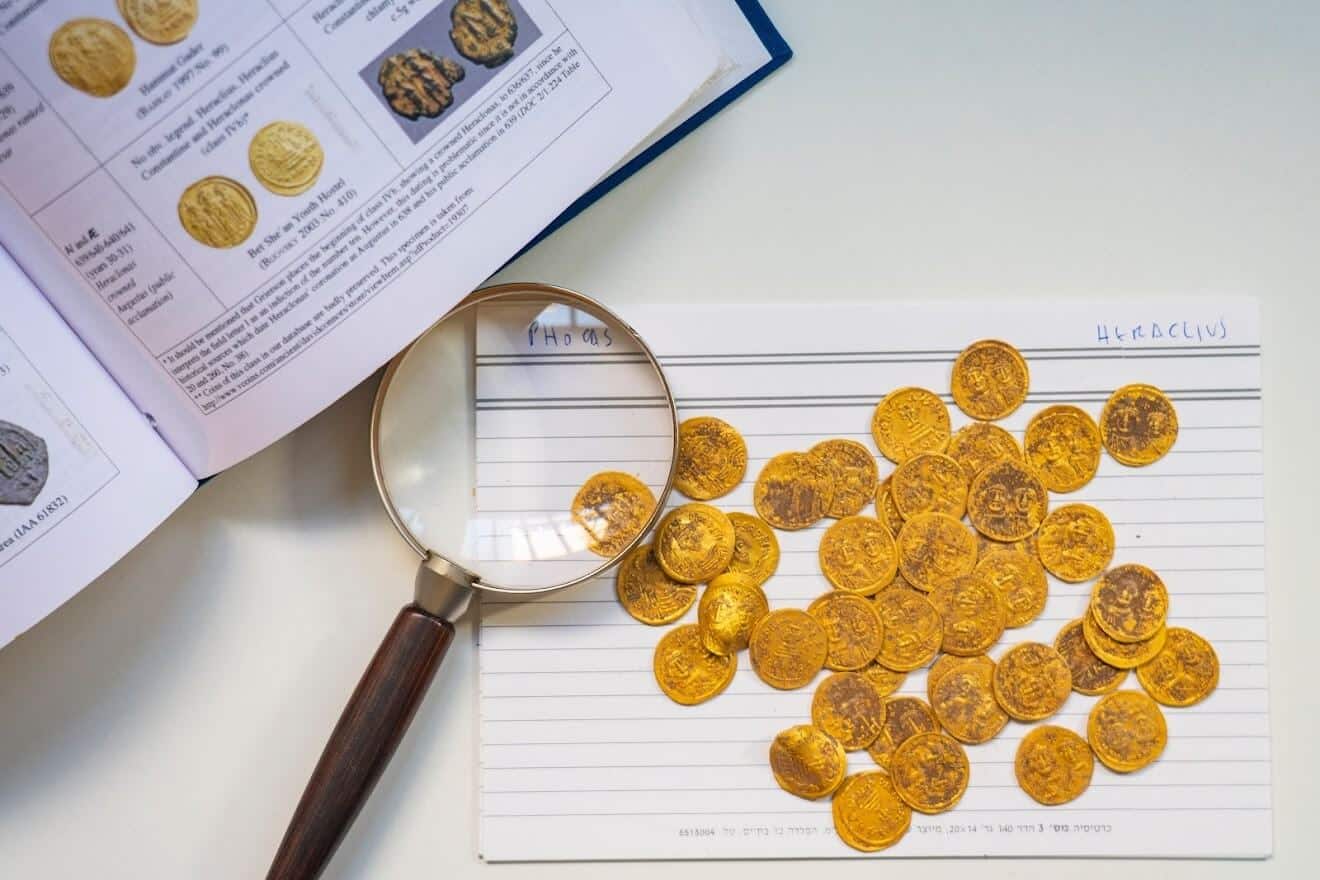
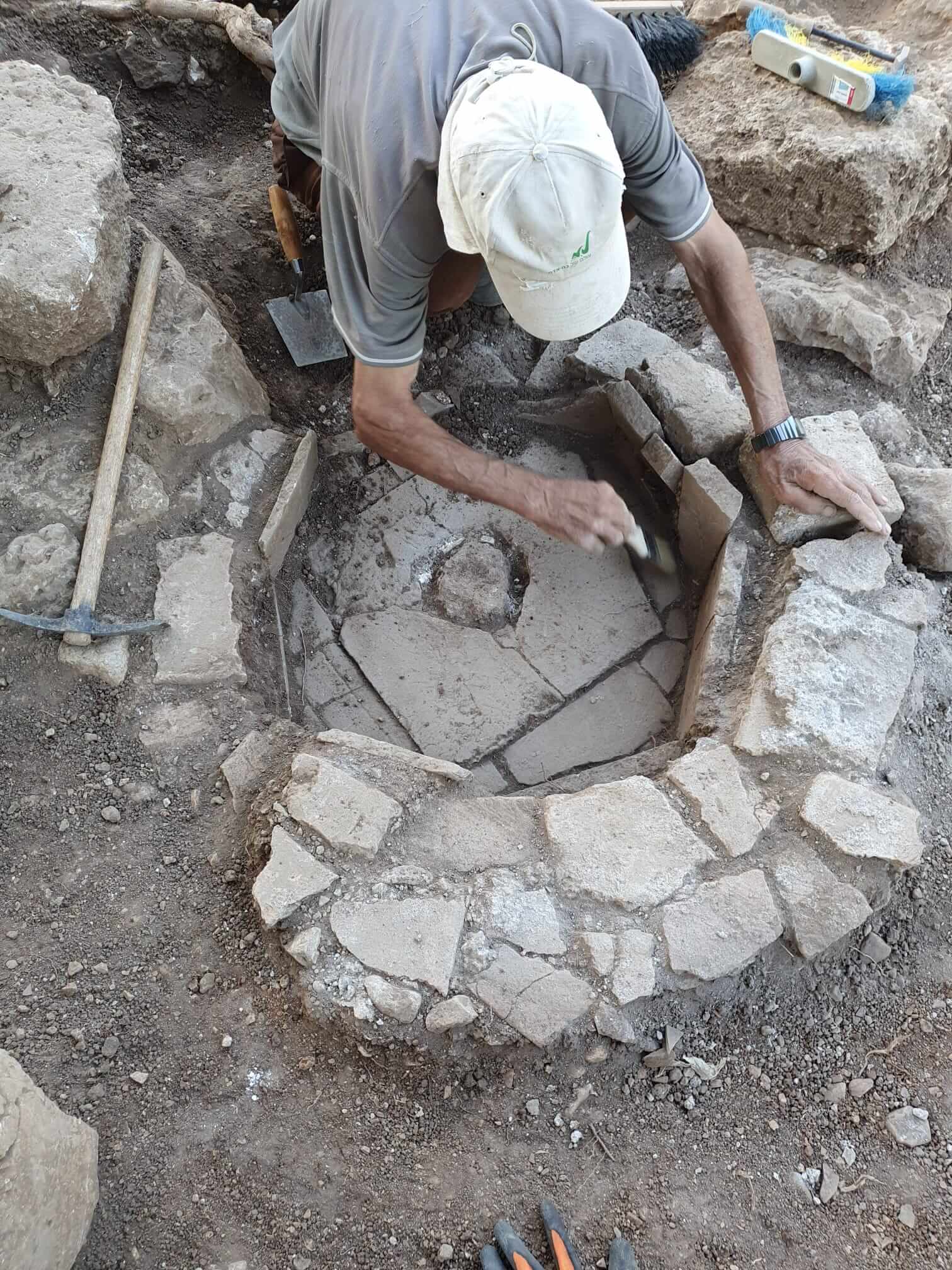
A cache of 44 pure gold coins was recently discovered at the Banias site within the Nahal Hermon Nature Reserve, in an excavation by the Antiquities Authority, which is currently being managed with funding from the Electric Company. The excavation is being conducted in preparation for connecting the Makam Nabi Khader site, sacred to the Druze, to the electricity grid.
Dr. Gabriela Bichovsky, coin expert at the Antiquities Authority who examined the hoard, determined that it contained several coins of the Emperor Phocas (602-610 AD) and many coins minted by the Emperor Heraclius (610-641 AD), all of the coins are about Solidus. The latest coins of Heraclius date the hoard to the days of the Arab occupation.
According to Dr. Yoav Lerer, director of the excavation on behalf of the Antiquities Authority, "The treasure, which weighs about 170 grams, was buried at the base of a wall built of ashlar stones, during the conquest of Ai by the Muslim Caliphs from the Umayyad House. The find provides us with a picture of a moment in time, when one can literally imagine the person hiding his wealth from the anxiety of the war, and this - in the hope of returning and collecting his property. Today we know that his fate did not favor him." Lehrer adds that "finding the treasure could shed light on the economy of the town of Nias in the last 40 years of Byzantine control of the city."
"Most of the coins in the hoard belong to the Byzantine emperor Heraclius," adds Dr. Bichovski, and what is particularly interesting about them is that at the beginning of the emperor's career, you only see his portrait on the coin, but very quickly, the portraits of his family members join him. You can actually see the growth process of his sons on the coins, from childhood - until they appear on the coin with the same height as their father the emperor, who appears with a long beard."
The excavation, which was carried out in the northwestern residential quarter of the ancient city of Nias, revealed the remains of buildings, canals and pipes for transporting water, a furnace for making ceramic vessels, and many small finds, including fragments of pottery, glass, metals and bronze coins. These date from the end of the Byzantine period, the early Middle Ages and the Crusader period.
The Banias is an archaeological site - now a nature reserve under the management of the Nature and Parks Authority, where a settlement existed during different periods: first, the Canaanites established a settlement there with a temple to the god Baal in the center.
In the Hellenistic period, the place was used as a place of worship for the god "Pan" - (hence the name Panias, which over time was mistaken for Banias). The settlement reached its peak during the Roman period. Herod, followed by his son Philip, rebuilt the place, and called it "Caesarea - Philippi", in honor of Augustus Caesar.
In Christianity, the Banias became famous for being the place where Jesus gave Peter, the chief of the apostles, the keys of the kingdom of heaven. During the Crusader period, the Crusaders tried, in 1129, to fortify the city, in order for it to be used as their starting point for the conquest of Damascus, but this was a short period that ended quickly, because the Muslim forces captured the city in 1132.
According to Eli Escozido, director of the Antiquities Authority, "This is an important treasure of great archaeological value for the study of the history of the settlement in the Golan. This is a treasure from the transition period, which was one of the most important time periods in the development of the city of Nias. The Antiquities Authority, in coordination and cooperation with the Nature and Parks Authority, will work to present the treasure to the general public."
Raya Shurki, Director General of the Nature and Parks Authority: The Banias Nature Reserve, for its beautiful and unique nature and landscape values, never ceases to surprise in terms of its heritage values as well. The discovery of the gold hoard coincides with the recent discovery of a Byzantine church in Banias, which is, perhaps, the church of St. Peter. The church, which was damaged by an earthquake that struck the north of the country, will soon also be shown as part of public visits to the reserve. In the meantime, the remains of a mosaic floor and a carved stone on which many signs of the cross were engraved were uncovered, indicating that the Banias had become a pilgrimage site.
